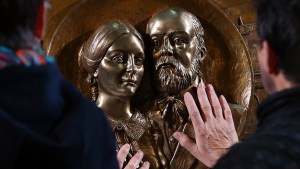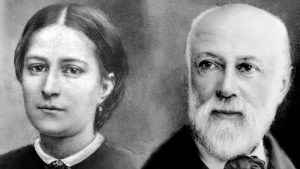Lenten Campaign 2025
This content is free of charge, as are all our articles.
Support us with a donation that is tax-deductible and enable us to continue to reach millions of readers.
When it comes to the most convenient time for a wedding, midnight is not typically the first thought that comes to mind.
Yet, Sts. Louis and Zelie Martin, the parents of St. Therese of Lisieux, were united in Holy Matrimony at roughly 12:00 a.m. on Tuesday, July 13, 1858.
Why was that?
Midnight fast
The most common explanation behind their choice stems from a discipline the Catholic Church observed in the 19th century.
For many centuries Catholics were obliged to fast before Mass starting from the midnight before. This meant Catholics who wanted to receive Holy Communion at the next Mass they attended had to abstain from food. Water was also included in this fast during the 19th century, making it extremely difficult to fast during the daytime hours.
One way around this rule was to celebrate Mass at dawn, or in some instances, to celebrate it at midnight.
In this way a person could have a normal amount of food during the day and then receive Holy Communion at Mass celebrated after 12:00 a.m.
Sts. Louis and Zelie Martin knew the value of the Eucharist and so scheduled their Nuptial Mass at a time when they could more easily receive Holy Communion.
Quiet and simple
Another reason that many biographers point to is the desire of Sts. Louis and Zelie Martin to have a simple and quiet wedding.
They did not want to invite the whole village to the wedding and preferred to spend their first moments of marriage in solemn prayer.
Civil ceremony
One last note is that Sts. Louis and Zelie Martin’s feast day in the Church is July 12, the date of their civil marriage. As is the law even today, French couples had to register their wedding in an official civil ceremony, which could be followed by a church ceremony if they so chose.
They arranged their civil ceremony to take place at 10:00 p.m. on Monday, July 12.
It was the beginning of their marital life, though they had to wait a few hours before they could fully embrace in the eyes of the Church.



